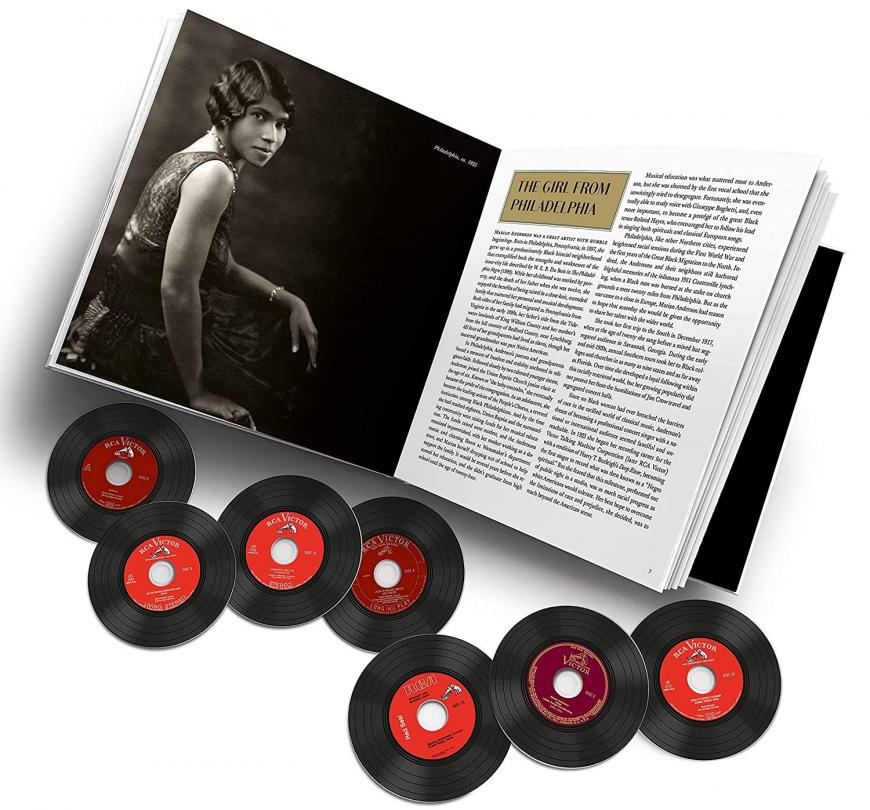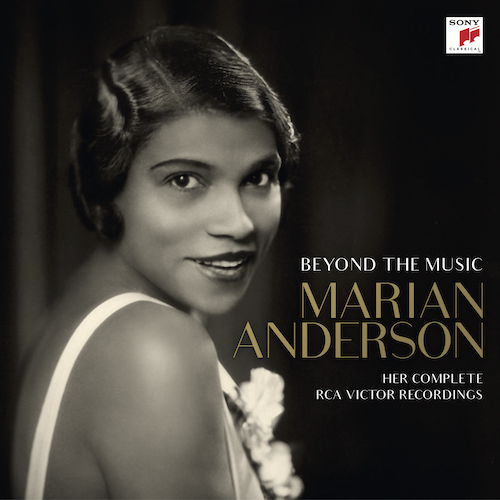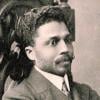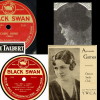
With interest in African American composers and artists on the rise, Sony (owners of the RCA Victor/BMG catalogue) has issued a huge, 226-page coffee-table book dedicated to the great contralto Marian Anderson (February 27, 1897 – April 8, 1993). The raison d’être for Beyond the Music: Marian Anderson—Her Complete RCA Victor Recordings is not its numerous large photographs of Anderson, which are supplemented by album covers, liner notes, tributes, concert programs, and complete discographical information in multiple formats, but rather its 15 CDs that include every recording Anderson made for RCA Victor from 1923 (when she was 26) through 1966 (when she was 69).
Impeccably remastered from 24/96 digital transfers, the set includes the first-ever release of her complete 1966 Farewell Recital in Constitution Hall, 72 first issues on CD, and numerous unpublished recordings that receive their first release. As of this writing, high-resolution streams and downloads of the material have not been announced.

While Sony’s package is not all the Anderson that every music lover may want or need — more on this below — it offers a close to complete picture of the artist in studio during most phases of her career. Absent are documents from the key decade of 1925–1935, when Anderson was often in Europe. The prime-voiced Anderson first returned to the RCA Victor fold at the start of 1936, when she entered RCA Victor’s Studio No. 3 in New York City to make her first electrical recordings of spirituals, Schubert lieder, and Sibelius songs.
If you know anything of Anderson’s career, it is possibly the famed outdoor concert at Washington D.C.’s Lincoln Memorial on April 9, 1939. Philadelphia-born Anderson, the granddaughter of enslaved people, had already built an impressive career for herself in Europe when, in 1935, she secured management from famed Russian Jewish impresario Sol Hurok.
Even though Anderson’s resume contained praise from the likes of Jan Sibelius (“My roof is too low for you”), Dmitri Shostakovich, Konstantin Stanislavsky, Arthur Rubinstein, and Arturo Toscanini (“Yours is a voice heard once in a 100 years”), and well-received recitals in Salzburg, New York’s Town Hall, and before President and Mrs. Roosevelt in the White House, Hurok could not book her for a recital in D.C.’s Constitution Hall. After it was determined that the Hall, which had served as the home of the Daughters of the American Revolution (DAR) since its opening in 1929, had refused the request because of Anderson’s race, First Lady Eleanor Roosevelt resigned as a member of the DAR.
A huge movement on Anderson’s behalf ensued, culminating in the Roosevelt administration-sponsored open-air Easter Sunday concert for an integrated audience of 75,000. When Anderson arrived, she did not know that the platform on which she would stand contained 200 seats for Supreme Court justices, congressional leaders, Cabinet officials, and other luminaries. As she later wrote, “I felt for a moment that I were choking. For a desperate second, I thought the words [to “America the Beautiful”], well as I know them, would not come.” After the concert of five numbers, which began in Anderson’s high range and ended with the stunning low-voice spiritual, “Trampin’” (arr. Edward H Boatner), Anderson’s path as a representative of American artistry at its finest was set.
The Woman | The Voice
By sampling Anderson’s RCA recordings, starting with the previously unissued trial recording of the spiritual “Deep River” (arr. Henry Thacker Burleigh) from Nov. 1, 1923 through Brahms’s “Dein blaues Auge hält so still” (Your blue eyes stay so still), Op. 59/8 from the previously unissued final recording session(s) in 1966, several things become clear. First, early in her career, Anderson preferred slower and more stately tempos that emphasized her dignified treatment of the music at hand. It took her some time until she felt free enough to begin to let go, at least in the studio.
Second, the beauty and range of her voice were astounding. Her low notes were like few on record. When, on her first recording, Anderson intoned the words “deep river” lower in her range, you knew that she was singing of one of America’s deepest and most profound historic divides, that between slave states and free states. At the high end of her range, especially earlier in the career, the voice was remarkably free and soprano-like.
Third, Anderson’s desire to reinforce her classical training surfaced most strongly when she performed spirituals. She continued to roll “rrrrs” in select spirituals throughout her career, and was very careful not to indulge in “Negro” English — what we’d now term ebonics — and Southern dialect beyond what was enshrined in the lyrics themselves.
Anderson was a natural storyteller. Give her songs like Schubert’s “Erlkönig” (The elf king), in which she thickened and deepened her voice to play the father and shook her vibrato to convey his son’s fright, “Der Doppelgänger” (The phantom double), and “Die Forelle” (The trout), and she was in her element. Dramatically, she exercised a certain level of restraint — she never went as far in “Der Doppelgänger” as the German-born Lotte Lehmann, who recorded it at age 53 — but when the music and circumstances truly moved her, her narrative strengths came to the fore.
Sometimes she was more relaxed and willing to let go than other times. She recorded lieder by Schubert and others multiple times before versions recorded between 1945 and 1951, when she was at the tail end of her prime, were considered acceptable (either by her or her producers). But when those definitive versions were released, they made quite the mark. If, for example, you have not yet heard the haunting solemnity of 1951’s “Der Jüngling und der Tod” (The youth and death), with its profound repeat of the words “O komm” (O come) and the finality of its concluding phrase, or the incomparably mesmerizing “Der Tod und Das Mädchen” (Death and the maiden) from the end of 1947, your understanding of great singing is about to be enriched. Note as well that as good as these recordings may sound on YouTube, they sound far better and more impactful in their latest remasterings.
Anderson’s ability to sing quietly, almost as if she were whispering to you alone, was one of her most indelible attributes. One might not at first consider Schumann’s Frauenliebe und Leben prime Anderson material, given its echt old country (as in central European) subject matter, but her magnificent recording from 1950 is remarkable for its deeply felt intimacy. Time and again, when her material called for it, she tapered her large instrument down to a quiet thread, moved very close to the microphone, and sang as though life itself depended on every sound and word she uttered. The effect, accomplished in concert with her eyes closed, was unforgettable.
For an example of how Anderson’s voice and interpretation changed over the years, compare her 1936 recording of Schumann’s “Der Nussbaum” (The nut tree) with Kosti Vehanen on piano to her 1945 recording with Franz Rupp. Listen to the extra tenderness she brings to the ending of the later version. What a lovely woman she was.
Although it is not discussed in the documentation for this Sony book, Anderson underwent surgery for a benign tumor on her esophagus on June 30, 1949. Though many of her recordings through 1952 are indisputably great, some show an increased reliance on soft singing, occasionally insecure pitch, a heavier top, and occasionally foreshortened high notes. As the years progressed, her age became especially apparent when she sang softly in her lower middle range. None of her Brahms songs from November and December 1955 — the year of her belated Metropolitan Opera debut as the first Black singer to grace its stage — were released, perhaps for these reasons.
Which is not say that some of the spirituals recorded in December 1961, including a gorgeous “He’s Got the Whole World in his Hands” and profound “I Want Jesus to Walk With Me,” are not required listening. But if you turn to the “Silent Night” she recorded on Oct. 2, 1961, and compare it to an earlier version from 1951, Anderson’s decline is evident. Which one might well expect from a singer who was dubbed the “the baby contralto” at age 6, and who sang constantly for more than 60 years.
As much as 15 CDs and a huge book may seem enough, they cannot replace JSP Records’ 2016 Marian Anderson: Let Freedom Ring! — which includes both the complete live 1939 concert at the Lincoln Memorial and the first release of a 1961 live concert in Copenhagen. Also worth seeking out is a Naxos Nostalgia issue, Marian Anderson: Softly Awakes My Heart, which includes Ward Marston’s remasterings of HMV (then EMI and now Warner) recordings from London and Paris 1928–1938.
It will likely be surpassed, however, by a future multidisc release that promises to fill in many if not all of the gaps in Anderson’s catalog with rare studio and live recordings. Readers familiar with the vital research of Jeffrey McMillan, formerly of the Metropolitan Opera archives and now of San Francisco Opera, will likely learn many new things about Anderson from his commentary. As if every newly remastered Anderson recording, including of her final studio effort in 1966, does not tell us even more about one of the greatest American classical and gospel singers of the past 100 years.




